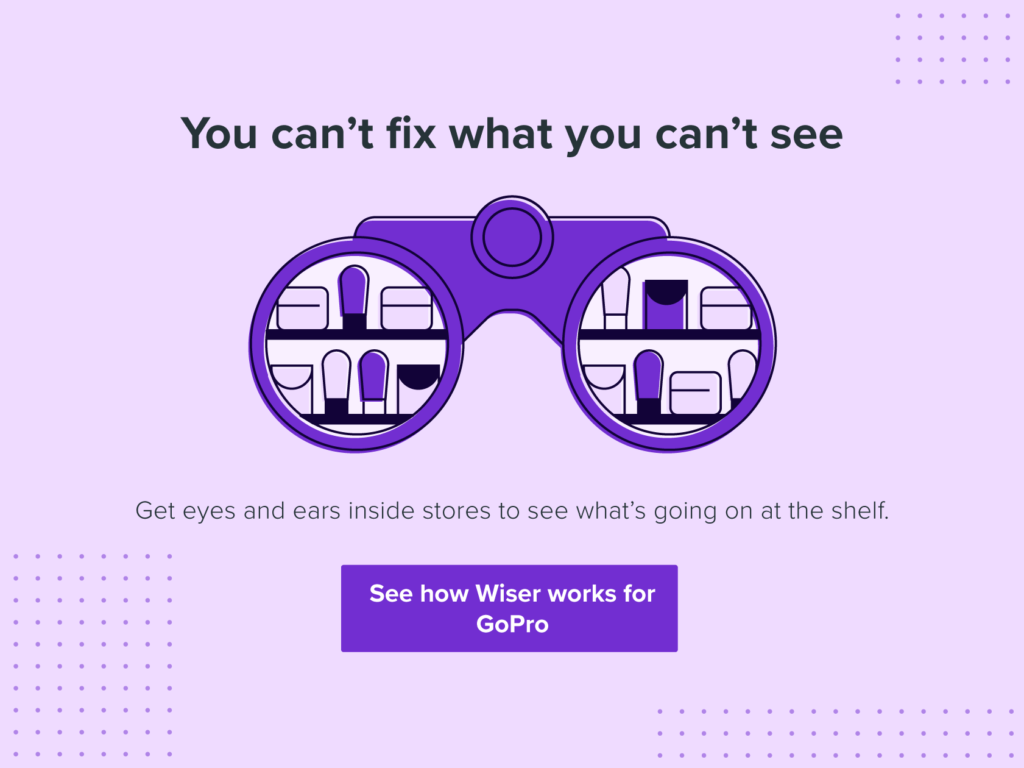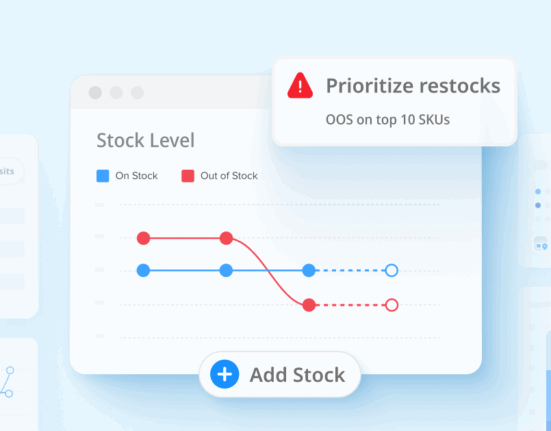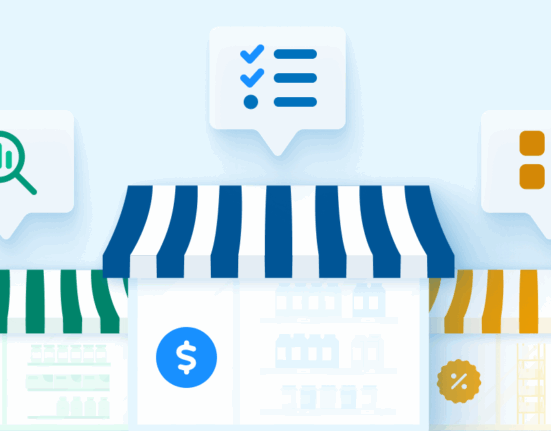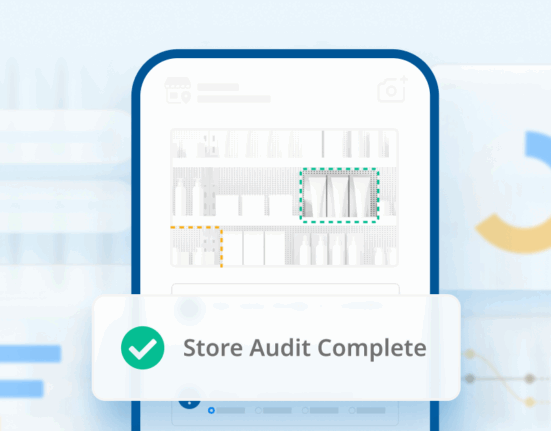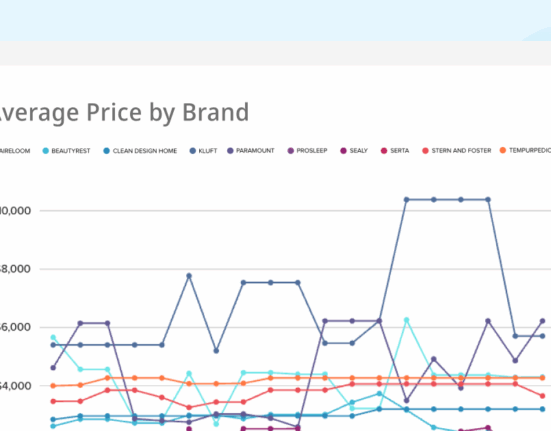In today’s hyper-competitive market, you have only seconds to sway a customer to purchase your product over a competitor. How you are positioned on the shelf is a key driver to impacting purchase behaviors and building an emotional connection with consumers.
What is Retail Shelf Space?
This can be achieved via retail shelf space. This is the amount of space on a physical store shelf allocated to one brand or product. In most cases, a shelf is loaded with a variety of brands and products. Each of those brands, naturally, wants more space for themselves and less space for their competitors.
Beyond that, the right placement on a shelf can increase sales. You’ll often hear “eye level is buy level,” but different products require different types of placements. There’s no one-size-fits-all solution, so there’s an entire ecosystem around shelf health, with brands, retailers, merchandisers, brokers, shoppers, and others all playing a role.
So, at a minimum, you need to have a grasp of your existing shelf space and areas for improvement. That brings us to our next topic: how you can gain control over your shelf space.
The Questions You Need to Ask About Your Shelf Space
These are the key issues impacting sales that you should keep in mind:
- Are the right products in stock?
- Are your products priced correctly?
- Are promotions/signage properly placed?
- Is shelf space correctly allocated?
- Are associates trained and positioning your brand correctly?
I know these are common sense questions, but we have all seen these issues. Most likely you are relying on retailers, third-party vendors, or a stretched-thin field team to address them across thousands of stores. Unfortunately, even if you suspect that your products are not being properly presented, those responsible will either be unresponsive, deny, or too often pay lip service.
The challenge is how to be in thousands of aisles at scale and affordably. If only there was a way to quickly visit, assess, and report back the status of your shelf health so you can make data-driven decisions that drive growth …
Leveraging the Crowd to Improve Your Performance at the Shelf
There is! It’s called the crowd. Today’s technology leaders from Waze to Uber are revolutionizing how we leverage the crowd and there is no better place for this technology than at the shelf.
What is the crowd? In this case, it’s a collection of everyday people who can go into stores to capture data on behalf of your brand. The benefits of the crowd over another in-store data collection method, like field teams, are the size and costs. You can tap into crowds in the thousands to cover a lot of locations that your in-house teams can’t access.
Therefore, app-based crowdsourced retail intelligence platforms can vastly expand your reach into the retail world. If you undertake a crowdsourced study, the following five steps can help you to maximize the effectiveness of the data gathered and take back control to win at the shelf.
No. 1: Define the Goal of the Study
For example, a common theme is “How to best position us to win at the shelf.” Once you have defined the goal, mock-up what the ideal reporting would look like. Use this to gather input from all key stakeholders. This can include marketing, sales, field teams, brand teams, distributors, and even retailers. Using a mock-up of the ideal study will help keep all stakeholders focused and provide key input to the design process without dragging on or delaying the study timeline.
No. 2: Put an App to Work
Utilizing an app, summon the crowd to all retail locations you want to study. One trick to improve the data collected is to host a soft launch. A small batch of responses can potentially uncover holes in the data collected, issues with survey format or questions, and problems with the crowd acquiring all the requested data. This will enable you to fine-tune and massage the survey for a full blast and maximize its effectiveness. Once settled, fully launch the study.
No. 3: Analyze the Data
A good approach is to analyze the data through the lens of the study goals and focus on the key and most meaningful takeaways. The best way to share the data with stakeholders is by presenting answers, not data. If done correctly you will have a deeper insight into your shelf health than ever before and a clear understanding of what needs to be addressed with actual data to support all conversations with field teams, retailers, and others.
No. 4: Prioritize the Next Steps
Prioritize and share the key findings so that positive attributes can be widely implemented and violations immediately addressed. This saves time as scarce resources can be used to maximize positive attributes as well as correct those in need.
No. 5: Reward Top Performers and Focus Resources on Serial Offenders
Use the carrot, not the stick, to reward top performers and focus on serial offenders to improve performance. We have seen successful companies gamify the data collection process with top performers being acknowledged and rewarded. This takes strong stores to the next level and is an incentive for poorly performing stores to focus on the issues and improve their operations.
How to Improve Shelf Health with Data
If properly implemented, the study will provide a wealth of data – including photos – on the health of your shelf space. Here at Wiser, we partnered with GoPro, which relied on an elaborate display, including videos and special casing, to properly position and drive sales. The field data for compliant stores versus non-compliant stores identified that stores with poor displays were underperforming to the tune of $40 million in lost annual revenue. You can check out the case study, linked above!
This clearly shows the power of shelf-level intelligence. The data will support your efforts to work with and monitor retailers and field teams to ensure they put your best foot forward at the shelf. The results will help drive future in-store marketing initiatives as decisions will be more data-driven, leading to better displays and a stronger connection with consumers.
Editor’s Note: Contributing writers are Angelica Valentine and Matt Ellsworth. This post was originally published in November 2017 and has since been updated and refreshed for readability and accuracy.

